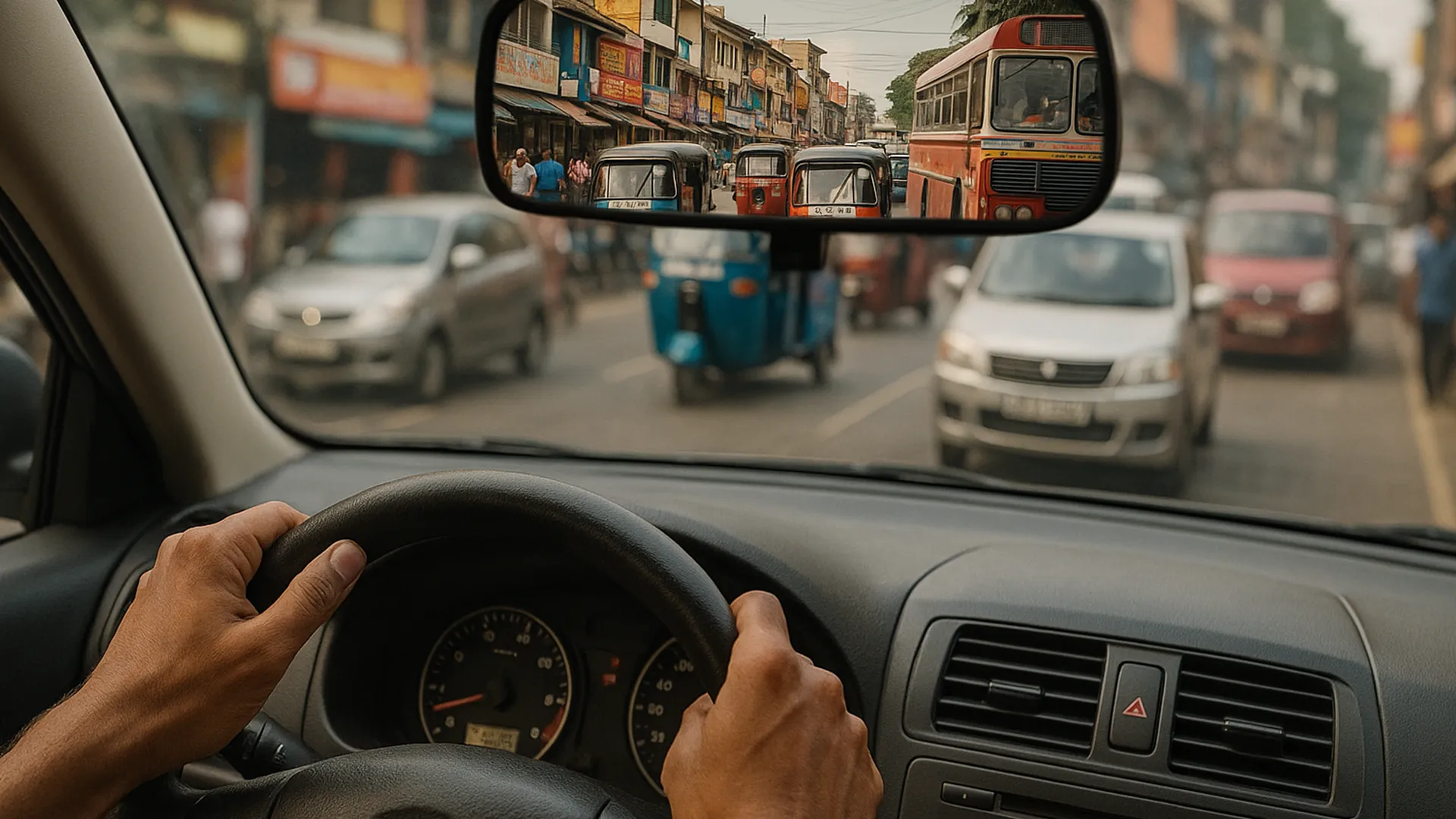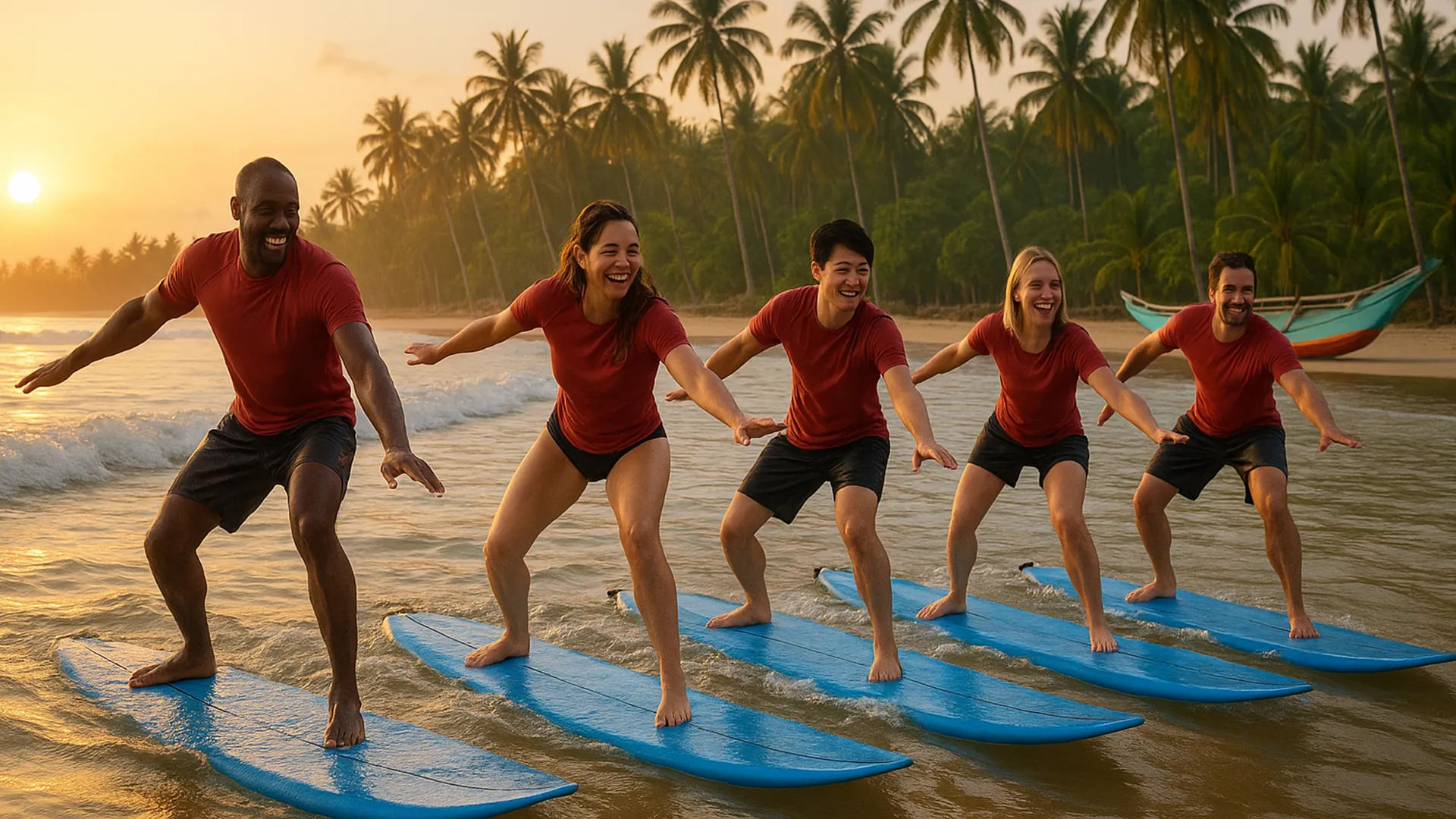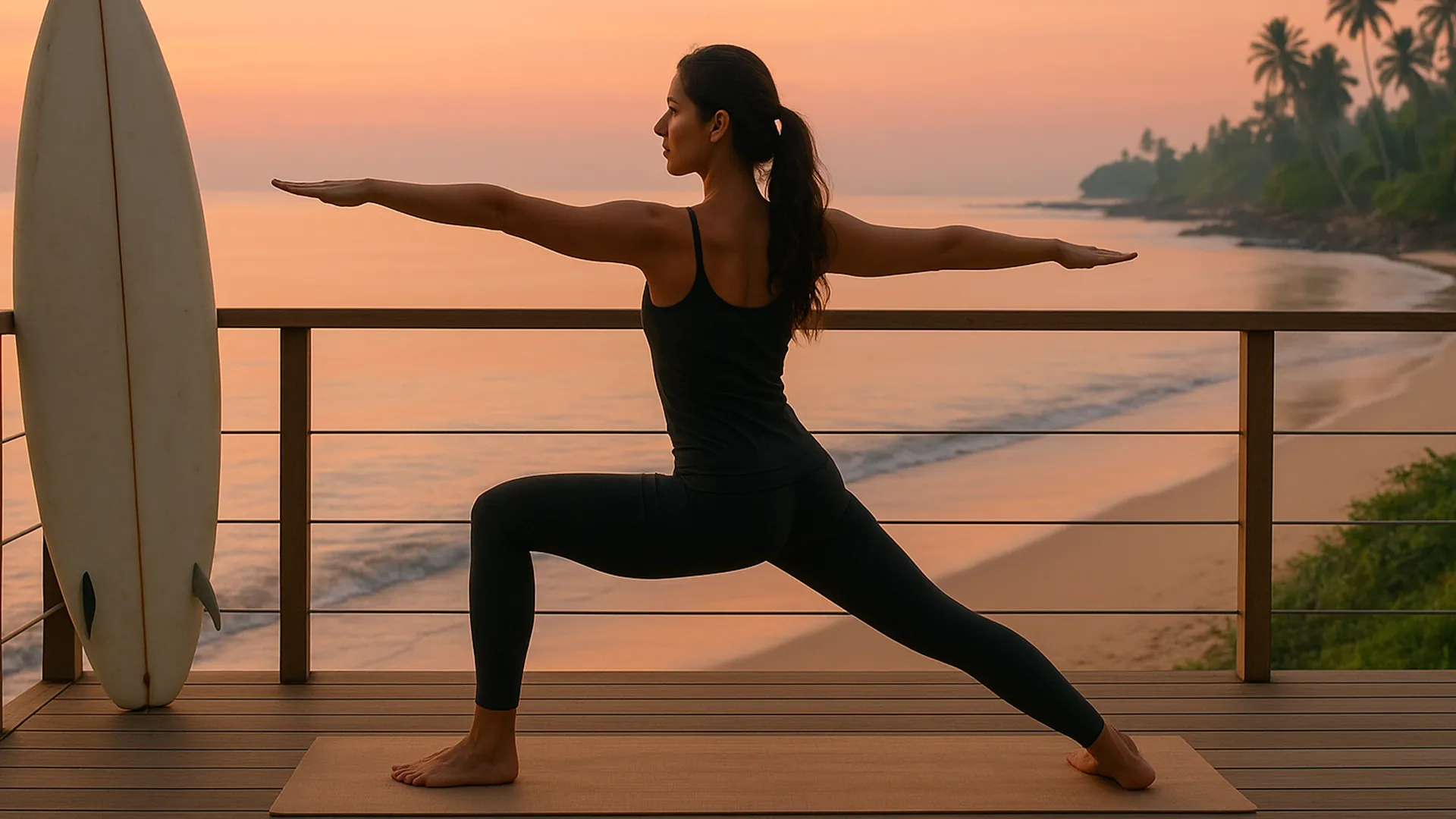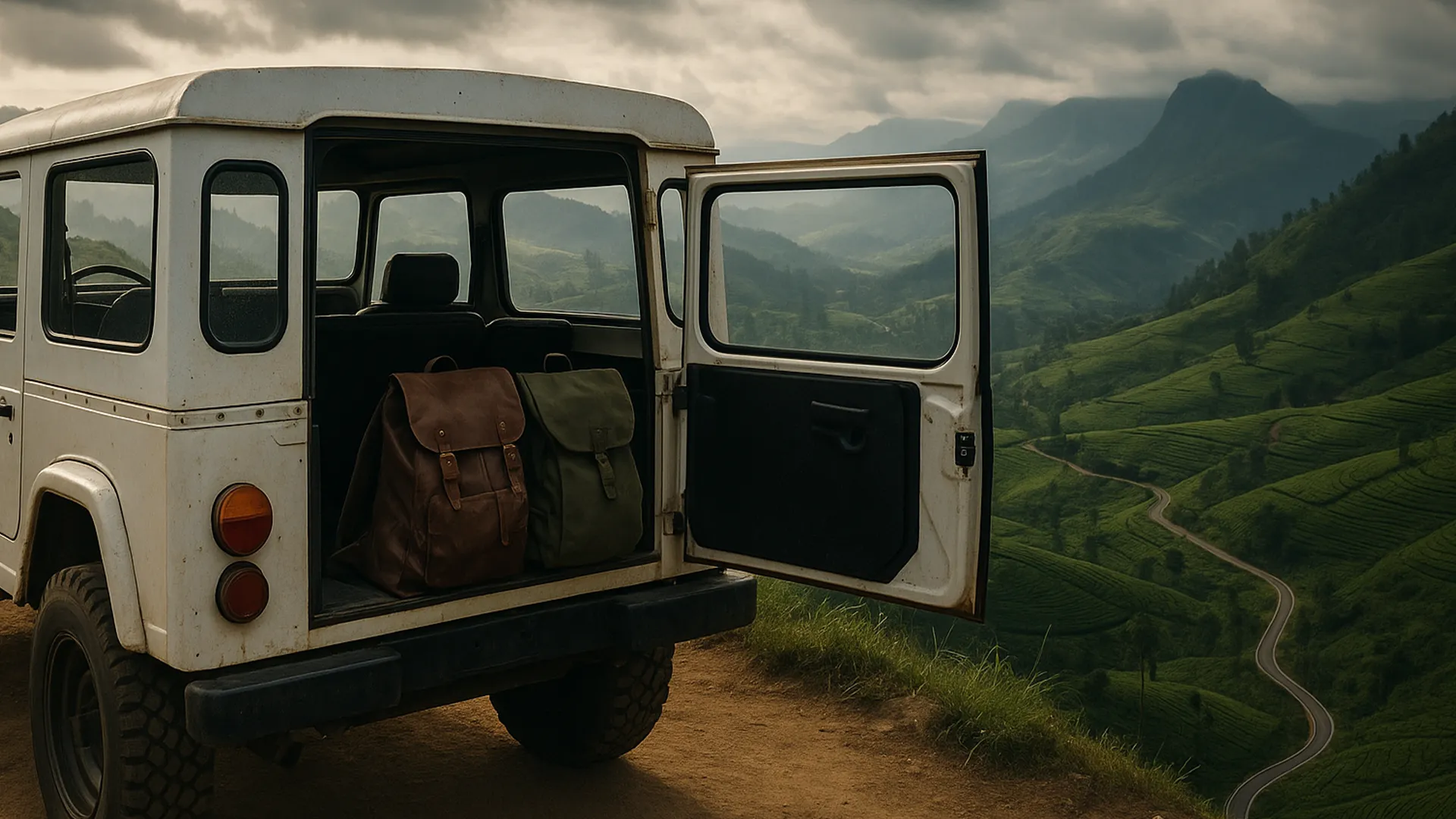
The decision to self-drive in a foreign country is a bold one, filled with visions of freedom but also tinged with apprehension. In Sri Lanka, both the dream and the challenge are very real. Driving here is a vibrant, chaotic, and uniquely organized ballet that operates on its own set of rules. Understanding these unwritten codes and practical realities is the key to transforming a potentially stressful experience into a confident and enjoyable adventure.
The formalities come first. To drive legally in Sri Lanka, you must have an International Driving Permit (IDP) alongside your valid driver's license from your home country. Car rental companies will require both. It is absolutely non-negotiable, and your insurance is void without it. When you pick up your vehicle, inspect it thoroughly. Note every single scratch, dent, and imperfection on the rental agreement before you drive away. Check the tire tread, the spare tire, and that all lights and indicators work. Take photos and videos of the car’s condition from every angle. This protects you from any unfair claims upon return.
Now, for the driving itself. The number one rule: drive on the left. It sounds simple, but after a lifetime of driving on the right, it requires constant, conscious effort. A good trick is to put a small sticker on the top-left corner of your windshield as a reminder. The second most important piece of advice is to be exceptionally cautious when pulling out into traffic or at junctions. Right of way is often determined by size and assertiveness, not by road signs. The largest vehicle usually has the right of way. Expect the unexpected at all times. The road is a shared space for cars, buses, trucks, tuk-tuks, motorcycles, bicycles, pedestrians, dogs, cows, and occasionally monkeys. Watch for hand signals from tuk-tuk and motorcycle drivers - a waving left hand often means it’s okay to overtake them.
The rhythm of the road is set by the public buses. They are the kings of the asphalt, often driving assertively and overtaking on blind corners. The universal language for “I’m coming through” is a quick flash of the headlights. If you see this coming from behind, especially from a bus or truck, it’s best to gently slow down and move left to let them pass. Similarly, if you are overtaking, a quick toot of the horn is a common way to alert the driver in front. This is not considered rude; it’s a necessary safety communication.
Outside of the main cities, driving becomes a more pleasant experience. The roads winding through the hill country towards Ella or Nuwara Eliya are spectacularly beautiful, but also narrow and winding. Take your time, use your horn on blind corners, and pull over to let faster local vehicles pass. Within Colombo, driving is an advanced-level skill. The traffic is dense and unpredictable. Many visitors choose to pick up their rental car after they leave the city, using taxis or Uber (which operates here) to navigate the capital.
Finally, embrace the journey. Allow extra time for every trip. What looks like a 100-kilometer journey on a map might take three or four hours due to the winding roads, traffic, and inevitable stops for photos, tea, or to let a herd of cows pass. Have a reliable offline map downloaded (Google Maps or Maps.me), carry cash for toll roads and parking, and always keep a bottle of water and your sense of humor handy. Driving in Sri Lanka is not a task to be endured; it’s an activity to be experienced. It will make you a more alert, patient, and adaptable driver. And the stories you’ll tell about navigating a mountain road with a bus on one side and a 1000-foot drop on the other will be among the best souvenirs you bring home.
Powered by Froala Editor
Related Insights & Articles

September 18th 2025
Finding Your Stoke: The Ultimate Guide to Sri Lanka's Surf Camp Culture
There’s a rhythm to Sri Lanka that matches the pulse of the ocean. It’s a call that draws surfers from all over the world to its golden shores, where consistent waves, warm water, and a laid-back vibe create a surfer’s paradise. But for every seasoned charger, there are dozens of curious beginners, eager to stand up on a board for the first time. This is where the island’s vibrant surf camp culture thrives, offering more than just lessons; it offers a gateway into a lifestyle.
The first decision is where to plant your flag. Sri Lanka’s surf scene is neatly divided by monsoon seasons, offering a year-round season depending on which coast you choose. The southwest coast - home to hotspots like Hikkaduwa, Midigama, and Weligama - catches the swell from the Arabian Sea from November to April. Weligama Bay, with its long, gentle, rolling waves, is arguably one of the best beginner beaches on the planet. It’s a forgiving classroom where you can practice popping up time and again without the fear of a punishing wipeout. From around May to October, the action shifts to the east coast, centered around the iconic village of Arugam Bay. The waves here are generally more powerful and suited to intermediate and advanced surfers, with legendary breaks like Main Point and Whiskey Point offering long, barreling rides. However, beginner-friendly areas like Peanut Farm and Pottuvil Point also exist, making Arugam a great destination for mixed-ability groups.
The term "surf camp" can mean many things, and Sri Lanka offers the full spectrum. You have the classic, budget-conscious surf camps, often run by passionate local surfers. These are social hubs, focused on community, with shared accommodations, daily lessons, and a vibrant, energetic atmosphere. They are perfect for solo travelers and those looking to make new friends. At the other end are the luxury surf retreats. These offer high-end private villas, gourmet meals, yoga sessions overlooking the ocean, and often more personalized coaching. They focus on wellness and comfort, providing a rejuvenating escape. Then there are the specialized camps, like Surf and Yoga retreats, where days are split between riding waves and finding balance on the mat, or Adventure camps that mix surfing with safaris, hiking, and cultural trips to ancient sites.
A typical day at a surf camp is a beautiful routine. It starts early, often before the sun gets too strong, with a hearty breakfast of fruit, eggs, and hoppers to fuel the session. You’ll grab your board - usually a soft-top longboard for stability - and head to the beach with your instructor and the rest of the camp. The lesson begins on the sand, covering the basics of paddling, popping up, and stance. Then, it’s into the water. There’s nothing quite like the feeling of your instructor giving you a push into your first unbroken wave and the sudden, silent glide as you stand up and ride it all the way to the beach. It’s a burst of pure, unadulterated joy. The late mornings are for relaxing - napping in a hammock, reading a book, or getting a massage to soothe sore muscles. The evenings are for community, sharing stories of the day’s waves over a delicious Sri Lankan rice and curry feast, the sound of the ocean providing the constant soundtrack.
But a surf camp experience is about so much more than just surfing. It’s about immersion. It’s about learning to read the ocean, understanding the tides, and the wind. It’s about the respect you learn for the local surfers who have grown up with these waves. It’s about exploring the local area, perhaps renting a scooter to find a hidden beach or visiting a nearby temple. It’s about the spontaneous cricket match that breaks out on the beach at sunset. You leave with more than just a new skill; you leave with a new perspective, a connection to the ocean, and a tribe of people who shared that experience with you. Whether you’re a complete novice or looking to improve your technique, Sri Lanka’s surf camps provide the perfect, sun-drenched setting to find your stoke.
Powered by Froala Editor

September 18th 2025
Soul, Surf, and Asana: Why Sri Lanka is the Premier Surf and Yoga Destination
The connection is innate, a symbiotic relationship between two practices that seem, on the surface, to be very different. One is a dynamic dance with the raw power of nature; the other is a still, internal journey of breath and body. Yet, surfing and yoga are two sides of the same coin, both requiring core strength, balance, flexibility, and, most importantly, a focused, present mind. Nowhere is this connection celebrated more holistically than in Sri Lanka, where the environment itself seems designed to foster this perfect balance.
Imagine starting your day not with an alarm clock, but with the soft, melodic chanting from a nearby temple, mingling with the sound of crashing waves. You roll out your mat in an open-air shala, surrounded by palm trees, the morning sun warming your skin. Your yoga practice here is not just exercise; it is a ritual of preparation. The sequences are designed with the surfer in mind: deep hip openers like Pigeon Pose to counteract the constant pop-up motion, core-strengthening holds like Boat Pose to build stability on the board, and shoulder openers to ease the strain of paddling. But beyond the physical, the practice cultivates the mental toolkit you need for the ocean. Conscious breathing (pranayama) is training for when you’re held under by a wave, teaching you to stay calm and conserve energy. The focus on balance in poses like Tree Pose translates directly to finding your center on a moving surfboard.
After an hour of centering your body and mind, you head to the beach, feeling loose, focused, and energized. The transition from the stillness of your mat to the dynamic energy of the ocean is seamless. The patience you cultivated in holding a pose is now applied to waiting for the right wave. The awareness of your body’s alignment is now used to fine-tune your stance on the board. A surf session after yoga feels different. You’re more in tune with the water, more responsive, and less likely to fight against the wave’s energy. You find yourself flowing with it, applying the same principles of grace and presence you learned on the mat. When you wipe out - which you will - that yogic breath kicks in, keeping panic at bay.
The afternoons are for integration. This is the time for a deep, restorative yoga session or a guided meditation, perhaps focusing on the parts of the body that have been worked the hardest. It’s a chance to stretch out sore muscles, release tension in the upper back and shoulders, and allow the body to recover and repair. This conscious recovery is what allows you to surf day after day without burning out. It turns a surf trip from a purely physical challenge into a true wellness retreat. This holistic approach is what sets Sri Lankan surf and yoga camps apart. They are built on the understanding that to perform well in the water, you must take care of your body and mind out of the water.
The setting itself is the final, crucial element. Sri Lanka’s natural beauty provides a constant, breathtaking backdrop for this journey. Practicing yoga as the sun rises over the Indian Ocean, or meditating to the sound of rustling coconut palms, adds a profound layer of connection to nature. The island’s spiritual heritage, visible in its countless temples and the daily rituals of its people, infuses the air with a sense of peace and mindfulness. You leave a surf and yoga retreat not just with a better pop-up or a deeper stretch, but with a renewed sense of inner calm, a body that feels both powerful and supple, and a lasting connection to the rhythmic pulse of the ocean and your own breath. It’s a transformative experience that redefines what a vacation can be.
Powered by Froala Editor

September 18th 2025
The Freedom of the Open Road: A Beginner's Guide to a Sri Lankan Road Trip
The concept is endlessly romantic: hiring your own vehicle, mapping out a route, and setting off on an adventure where the journey itself is the destination. In Sri Lanka, this dream is entirely attainable, offering a level of freedom and spontaneity that organized tours can never match. The island’s compact size means you can experience beach, mountain, jungle, and ancient city within a relatively short drive, each turn in the road revealing a new vista. However, a Sri Lankan road trip is also a unique beast, an exhilarating dance that requires a blend of preparation, patience, and a good sense of humor.
The first and most important decision is your choice of steed. For the rugged, off-the-beaten-path explorer, a 4x4 Jeep is the king of the road. It offers peace of mind on rough mountain tracks, during monsoon showers, and on the dusty trails near national parks. For the vast majority of travelers sticking to main roads, a small, nimble car is perfect. It’s economical on fuel, easy to park in tight spaces, and maneuverable in hectic traffic. The most iconic, and arguably most fun, option for the coastal areas is the tuk-tuk. Renting an auto-rickshaw for a few days to putter along the southern coastline is a truly authentic Sri Lankan experience. It’s slow, open-air, and allows you to feel every sight, sound, and smell of the country. Just be sure to pack light!
Navigating Sri Lankan roads is an adventure in itself. Google Maps is generally reliable for main routes, but it’s wise to have a general sense of direction. The most important rule to remember is that in Sri Lanka, you drive on the left. This seems simple but requires constant vigilance, especially when pulling out from a stop or navigating roundabouts. Sri Lankan driving might initially seem chaotic to an outsider - a lively symphony of honking, overtaking, and sharing the road with everything from buses and trucks to cows, dogs, and pedestrians. The honk is not aggressive; it’s communicative. It’s a way of saying “I’m here,” or “I’m overtaking.” Embrace it. The key is to drive defensively, be predictable, and never assume the right of way. Patience is your most valuable asset.
The magic of a road trip, however, lies in the unplanned stops. This is where your own wheels grant you the greatest gift: serendipity. You can pull over whenever you see something interesting. Perhaps it’s a bustling local market where you can sample exotic fruits. Maybe it’s a small, unnamed temple where a friendly priest shows you around. It could be a viewpoint that isn’t in any guidebook, where you can stop for a cup of wonderfully sweet local tea and just take in the landscape. You might find yourself invited to a local village wedding or stumble upon a beautiful, secluded waterfall. These are the moments that become the heart of your travel story, the moments you simply cannot schedule.
A well-planned road trip itinerary is a beautiful thing. You could start in the cultural triangle, exploring the ancient ruins of Anuradhapura and the rock fortress of Sigiriya. From there, wind your way up into the hill country on a spectacular train-like road, passing through tea plantations and stopping in Ella for a hike. Then, descend back to the coast, trading the cool mist for the warm sun, and spend your final days relaxing on the beaches of the south or east coast. Each leg of the journey offers a dramatically different world, all within a few hours' drive. With your own vehicle, you are the master of your time. You can leave at dawn, or you can sleep in. You can spend three hours at a site that captivates you, or move on quickly from one that doesn’t. The freedom is absolute. It’s a chance to write your own adventure, one kilometer at a time, in one of the most beautifully diverse islands on Earth.
Powered by Froala Editor
